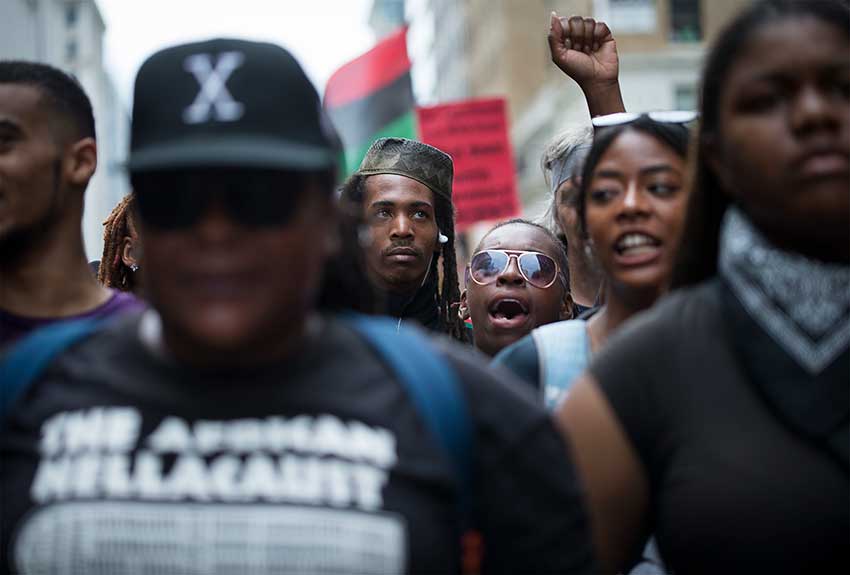Learning from others’ experience: early warning signals about sexual abusers
by Andrea Picciotti-Bayer
Can the police be a part of the answer to the Catholic Church’s current sex abuse crisis? Yes, but not only in the way you might immediately think. Turning over suspected cases of clerical sex abuse to law enforcement officials addresses the problem after the fact. The experience of law enforcement agencies, however, also provides a way to prevent incidents before they happen, before a victim becomes a victim, before a priest or prelate becomes an offender, before the Body of Christ is injured by scandal.
Any number of reform ideas will be proposed during Pope Francis’ abuse summit, and indeed important reforms have already been implemented. The Dallas Charter, enacted in 2002 by the US Conference of Catholic Bishops, includes a “zero tolerance” promise to sweep the Church clean of any priest or deacon who sexually abuses a child. The Charter has already helped enhance a culture of safety for children in US Catholic schools and parishes.

As the McCarrick affair makes painfully clear, though, amending the Dallas Charter to include bishops is not enough. Rather, the entire Church, both laity and ordained leadership, must confront the broader issue of sexual infidelity among too many of our clergy. Lessons learned by American law enforcement in addressing police misconduct can help restore a culture of fidelity among clergy and a climate of trust among the faithful.
In the late 1990s, I worked as a trial lawyer in the Special Litigation Section of the U.S. Department of Justice’s Civil Rights Division. Shortly before I arrived, Congress had passed the Violent Crime and Law Enforcement Act of 1994, which made a pattern or practice of police misconduct unlawful. My office was tasked with the enforcement of that law. Since our 2018 Catholic “summer of shame,” I’ve often pondered how reforms that helped address and prevent police misconduct might help heal my beloved Church.
My first police misconduct case, in 1999, involved the Washington, D.C. police department. Chief of Police Charles Ramsey had requested the investigation on the heels of a Washington Post series on deadly force. “The District of Columbia’s Metropolitan Police Department has shot and killed more people per resident in the 1990s than any other large American city police force,” the opening line of the series’ first article read. The Post identified troubling uses of deadly force, rampant mismanagement, and a general lack of accountability. Despite having implemented a new use-of-force policy shortly after his appointment earlier that year, Chief Ramsey was humble enough to admit that he did not have a handle on the extent and nature of the problem.

Ramsey’s request was broad. He asked for a review of all uses of force, as well as a thorough review of department policies, training, supervisory oversight, record-keeping, investigation, and discipline. Our Justice Department investigation culminated in an enforceable Memorandum of Agreement. Along the way we provided technical assistance to police leadership. High among our recommendations was an early warning tracking system. An early warning system, as we defined it, is a “data-based police management tool designed to identify officers whose behavior is problematic and provide a form of intervention to correct that performance.” It allows a department to intervene through counseling and training – before an officer requires formal disciplinary action.
Among police officers, what performance indicators raise “red flags”? Citizen complaints, firearm discharges, use-of-force reports, resisting arrest incidents, high-speed pursuits, and vehicle damage are among the basic indicators. As part of the 2015 White House Police Data Initiative, University of Chicago researchers have expanded the list and developed an even more accurate model to identify “at-risk” officers. Once a police officer is identified as “at-risk,” immediate supervisors and other command officials must provide individualized counsel and training and the department must monitor the officer’s performance for a period of time afterwards.
Of course, early warning systems only work if the department requests and receives accurate data and, more importantly, if supervisors and top brass are committed to its implementation and use.
While police misconduct does not offer a perfect parallel to clerical sexual misconduct, I believe safeguards like early warning systems can help our Church leaders respond more effectively to the challenge of inspiring and helping foster clerical chastity. This past fall, the American bishops expressed a desire to get in front of things instead of only reacting to crises. To do so effectively, they must define the factors that contribute to and correlate with clergy sexual misconduct, identify priests in need of intervention, and undertake corrective support and discipline.
So, what are the “red flags” that might lead a man to become an “at-risk” priest?
Personality traits that may not be significant enough to disqualify a man from the priesthood cannot be ignored post-ordination. Does he show signs of a personality disorder, or behaviors like impulsivity or haughtiness that close him off from obedience and fraternal correction? Does he struggle with untreated depression? In his childhood and youth, did he suffer abuse (sexual or otherwise)?
Since ordination, has a priest lived a spirit of prudence and sobriety? Are there any allegations of financial impropriety? Are there any known external behaviors contrary to priestly chastity? Have there been complaints about boundary issues?
Because the abuse crisis is, at its core, a crisis of sexual infidelity, the issue of same-sex attraction cannot be ignored. “If a candidate practices homosexuality or presents deep-seated homosexual tendencies, his spiritual director as well as his confessor have the duty to dissuade him in conscience towards ordination,” according to the Vatican’s instructions for seminary formation. Although having homosexual desires is not an automatic disqualifier to the priesthood, a priest thus afflicted will need special counsel and supports to live a life of continence.
The invidious influence of pornography on a proper respect for human sexuality cannot be dismissed either. More than a decade ago, Bishop Paul S. Loverde of the diocese of Arlington, Virginia, published a pastoral letter entitled “Bought with a Price: Every Man’s Duty to Protect Himself and His Family from a Pornographic Culture.” The letter’s most recent edition includes a forward from a man who overcame an addiction to pornography. “I came to understand,” he lamented, “how when husbands and fathers use porn, they not only make themselves slaves to sin, they also deeply wound their ability to love and protect in a way their vocation demands.” Priests are susceptible to our modern plague of pornography and the harm it can to do to their own vocation. Does a priest consciously guard his eyes? Are there indications – say, an Internet browsing history – of pornography use?
The McCarrick case has shed harsh light on how a clerical “double life” is lived, and how inconsistent it is, or should be, with the priesthood. Does a priest inform his pastor/parochial vicar or secretary (his closest collaborators) of his whereabouts? Does he have healthy friendships with happily married practicing Catholics? Does he have healthy friendships with other well-formed priests?
Finally, is a priest serious about his interior life? Is he actively living a pious life? Does he go to confession regularly? Does he seek spiritual direction and make his annual canonical retreat? Does he pray? Does he humbly receive filial correction from his parishioners, fraternal correction from brother priests, and corrective discipline from his superiors?
A priest’s superiors and priest colleagues can answer many of these questions. The laity can answer others. For the good of the Church, all should have voice in this early warning system.
An ecclesiastical early warning system would lower the number of cases of sexual abuse by clergy, whether the victims be minors or vulnerable adults. It would also provide bishops the hard data to confront a culture of sexual infidelity where it exists, and to tailor specific supports for priests struggling to live fruitful and chaste vocations. For bishops who are already well-aware of the vulnerabilities of their priests, an early warning system is a useful tool for initiating effective interventions and follow-up. As for bishops who have either downplayed the problem or rationalized looking the other way, the system will more effectively hold them accountable.
With law-enforcement’s “early warning” system as a model, and God’s grace, our bishops might see a day when they will not have to call in the police regarding one of their priests or fellow bishops.
Andrea Picciotti-Bayer is legal advisor to the Catholic Association Foundation, an organization dedicated to being a faithful Catholic voice in the public square. In addition to opinion pieces in Catholic and secular media, she is the author of several amicus briefs submitted to federal courts of appeals and the U.S. Supreme Court in defense of pro-life pregnancy centers and faith-based foster care agencies. A graduate of Northwestern University and Stanford Law School, she served as a trial and appellate lawyer in the U.S. Department of Justice’s Civil Rights Division.
